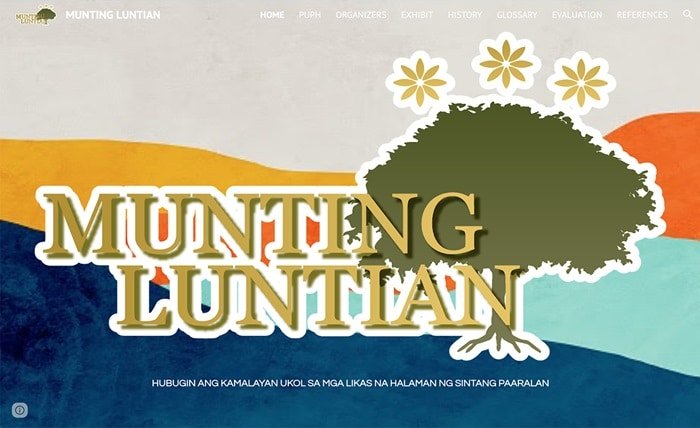Introduction
In recent years, the term “munting” has started to gain traction, particularly in certain communities and among young people. But what does “munting” mean? Is it a slang term, a cultural reference, or something else entirely? In this blog post, we will dive deep into the meaning of “munting,” exploring its various interpretations, its origins, and how it fits into modern language and culture.
Understanding “munting” requires looking at its different uses, contexts, and even the way it has evolved. Whether you’re curious about its linguistic roots or wondering how it’s used in everyday conversation, this guide will give you a complete understanding of what’s munting.
What’s Munting in Linguistic Terms?
In the world of language and linguistics, every term has a specific role and meaning. The term “munting” is no exception. In its simplest form, “munting” is often used as a colloquial term in certain regions, particularly in the Philippines. It refers to something that is small, delicate, or charming in size or nature. The word derives from the root “munting,” which can be traced to local dialects that emphasize diminutive qualities.
In linguistic terms, “munting” functions as a descriptive adjective. It conveys a sense of something that is petite, often endearing. While its origins are deeply rooted in Filipino culture, it has gradually found its way into broader conversations, particularly in online communities. The increasing use of this term points to its growing popularity as part of modern colloquial speech.
The Cultural Significance of What’s Munting?
Culturally, “munting” holds a unique place in Filipino vernacular. In the Philippines, the word is often used to describe a range of things—from small houses to delicate handmade items or even endearing personalities. It reflects the value placed on things that are considered charming, humble, or small but meaningful.
The term also has symbolic meanings. For instance, “munting” can be used to describe small acts of kindness or modest living. It embodies a sense of simplicity that is highly appreciated in Filipino culture. As such, the use of the word often carries a sense of nostalgia, linking the speaker to traditional values and a deep appreciation for simple, unpretentious lifestyles.
How “Munting” Relates to Filipino Architecture
One of the most common uses of the term “munting” is in Filipino architecture. In this context, the word is often used to describe small homes, particularly those built in rural areas. These homes are typically modest, designed with functionality and simplicity in mind. They may be smaller in size compared to urban dwellings, but they often carry significant cultural weight.
The term “munting” captures the essence of Filipino architecture—humble yet welcoming, often built with local materials, and designed to blend seamlessly with the surrounding environment. These houses reflect the values of family, community, and a connection to the land. The use of the term “munting” to describe such homes highlights the importance of preserving tradition and honoring simpler ways of living.
“Munting” in Modern Slang: A Shift in Meaning
As language evolves, so do the meanings and uses of words. Today, “munting” is used in a variety of contexts, especially in online conversations and social media. In modern slang, the word has taken on new meanings. It is often used to describe something or someone that is adorable, cute, or pleasant in appearance. For example, a small, cute pet might be called “munting,” or a person who is petite and charming could be described as “munting.”
The modern use of “munting” reflects a shift in how we view beauty and cuteness in contemporary society. Instead of focusing solely on physical size, the term has become a way to describe something that brings joy or warmth, regardless of its actual dimensions. It’s a term that has moved beyond its cultural roots to become part of a broader, more inclusive conversation about aesthetics and attraction.
What’s Munting in Filipino Literature?
In Filipino literature, “munting” appears frequently as a literary device to describe characters, objects, or settings that emphasize simplicity, innocence, or purity. For instance, in stories or poems that depict rural life, the term is often used to describe humble homes or gardens that symbolize peace and contentment.
In many works of literature, “munting” serves as a reminder of the beauty found in modesty and the value of living in harmony with nature. By using this word, authors convey a sense of nostalgia for simpler times and the peacefulness that comes with living a modest life. The use of “munting” thus deepens the emotional resonance of a story, making it a significant word in Filipino literary traditions.
The Global Spread of the Term “Munting”
While “munting” originated in the Philippines, it has gradually spread to other parts of the world, especially in online spaces where global communication is common. Thanks to social media and platforms like Instagram, where users share images and videos of their lives, the term has found its way into global conversations.
As people from different cultural backgrounds interact online, they bring with them their unique linguistic traditions. “Munting” is an example of how language can transcend borders and find new meanings in different contexts. Its usage outside the Philippines demonstrates the dynamic nature of language and how terms can evolve to fit new environments.
The Future of “Munting” and Language Evolution
Looking ahead, the future of “munting” in both Filipino and global contexts seems promising. As the world continues to become more interconnected, language will keep adapting to the diverse influences that shape it. “Munting” might continue to evolve, gaining new interpretations and uses in various cultures.
Whether it remains a term exclusively used in Filipino communities or becomes part of the global lexicon, the growing influence of “munting” in digital spaces suggests it will play a role in how we communicate across languages and cultures. It’s a reminder of the fluidity of language and how words can shape and reflect the ever-changing world around us.
Conclusion
In conclusion, “munting” is a term that carries deep cultural, linguistic, and emotional significance. From its humble beginnings in Filipino culture to its contemporary uses in literature, architecture, and modern slang, “munting” has proven itself to be a versatile and beloved term. Its evolution reflects the ways in which language can adapt to new circumstances, while still holding onto its original roots.
Whether you encounter “munting” in a poem, a casual conversation, or while browsing social media, understanding its nuances gives you a richer appreciation of its meaning and importance. Language, after all, is a bridge between people, cultures, and ideas—and “munting” is a prime example of how even the smallest words can carry immense power and beauty.
FAQs
- What is the meaning of “munting”?
“Munting” generally means small, delicate, or charming. It is often used in Filipino culture to describe something petite but meaningful. - Is “munting” used in other countries?
While primarily used in the Philippines, “munting” has found its way into global usage, particularly in online communities. - Can “munting” be used to describe people?
Yes, “munting” is often used to describe people who are small, cute, or charming in appearance. - What is the significance of “munting” in Filipino architecture?
In Filipino architecture, “munting” refers to small, humble homes that reflect traditional values and simple living. - Has the meaning of “munting” changed over time?
Yes, while “munting” originally referred to small, modest things, it has evolved to encompass ideas of cuteness and charm in modern slang.





